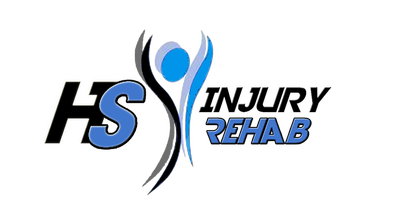The achilles tendon is located at the back of the heel. It attaches the muscles located at the back of the lower leg to the heel bone.
An individual who has suffered with achilles tendinopathies (problems to the tendon) is more susceptible to an achilles rupture. An achilles tendon rupture can either be complete or partial.
The achilles can rupture if an individual:
Signs & Symptoms
An individual may notice the symptoms come on suddenly during a sporting activity. A snap may be heard or the sensation of being kicked in the back of the leg when the tendon is torn. The sharp pain usually settles quickly, although there may be aching at the back of the lower leg. After the injury, the usual symptoms are:
Treatment
An achilles rupture should be diagnosed and treated as soon as possible. The individual may need to be referred on to see a doctor. If a ruptured Achilles tendon is suspected, you should not put any weight on that foot, so DO NOT walk on it at all.
There are 2 options for treatment. One being an operation to surgically repair the tendon. The two torn ends of the Achilles tendon are sewn back together, and perhaps may also use another tendon or a tendon graft to help with the repair. A plaster cast or brace is needed after the operation.
The second option is to allow time for the tendon to heal naturally, resting it in a brace or plaster cast. This is called conservative treatment. However, If the tendon does not heal on its own, a surgical repair can then be done later.
Both options will involve having a plaster cast or brace for about eight weeks, to protect the tendon while it heals. The plaster or brace is positioned so that the foot is pointing slightly downwards, this is done to take the strain off the tendon.
There is a trend towards early mobilisation rather than using crutches was traditionally done. This involves fitting a plaster or brace which you can walk on.
The tendon does take time to heal, usually about six to eight weeks. More time will be needed after this to allow the muscles to regain their strength from before the injury and from being in a brace/cast. The time taken to return to sport is between 4 and 12 months.
Hannah Schofield
HS Injury Rehab
An individual who has suffered with achilles tendinopathies (problems to the tendon) is more susceptible to an achilles rupture. An achilles tendon rupture can either be complete or partial.
The achilles can rupture if an individual:
- Makes a forceful push off with the foot whilst the knee is straightened. For example jumping, landing then pushing off to run
- A sudden trip or fall and the foot is put in front to break the fall, stretching the tendon
- Falling from a significant height or suddenly falling into a hole or off a curb
Signs & Symptoms
An individual may notice the symptoms come on suddenly during a sporting activity. A snap may be heard or the sensation of being kicked in the back of the leg when the tendon is torn. The sharp pain usually settles quickly, although there may be aching at the back of the lower leg. After the injury, the usual symptoms are:
- A flat footed type of walk. The individual can walk and bear weight, but cannot push of the ground properly on the side where the tendon is ruptured.
- If the tendon is completely torn, you may feel a gap just above the back of the heel. However, if there is bruising then the swelling may disguise the gap.
Treatment
An achilles rupture should be diagnosed and treated as soon as possible. The individual may need to be referred on to see a doctor. If a ruptured Achilles tendon is suspected, you should not put any weight on that foot, so DO NOT walk on it at all.
There are 2 options for treatment. One being an operation to surgically repair the tendon. The two torn ends of the Achilles tendon are sewn back together, and perhaps may also use another tendon or a tendon graft to help with the repair. A plaster cast or brace is needed after the operation.
The second option is to allow time for the tendon to heal naturally, resting it in a brace or plaster cast. This is called conservative treatment. However, If the tendon does not heal on its own, a surgical repair can then be done later.
Both options will involve having a plaster cast or brace for about eight weeks, to protect the tendon while it heals. The plaster or brace is positioned so that the foot is pointing slightly downwards, this is done to take the strain off the tendon.
There is a trend towards early mobilisation rather than using crutches was traditionally done. This involves fitting a plaster or brace which you can walk on.
The tendon does take time to heal, usually about six to eight weeks. More time will be needed after this to allow the muscles to regain their strength from before the injury and from being in a brace/cast. The time taken to return to sport is between 4 and 12 months.
Hannah Schofield
HS Injury Rehab


 RSS Feed
RSS Feed